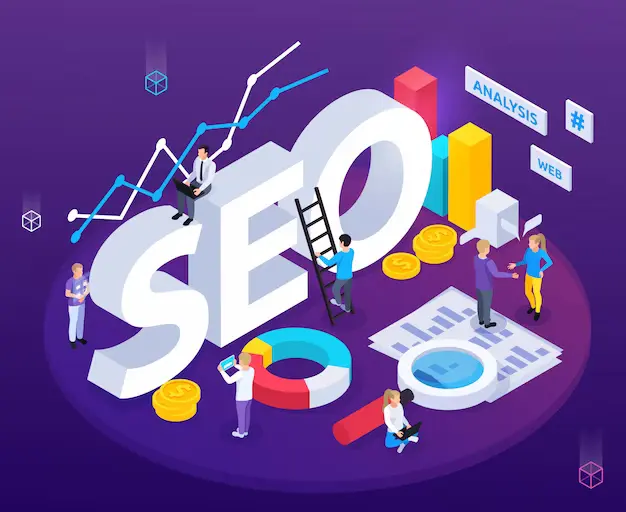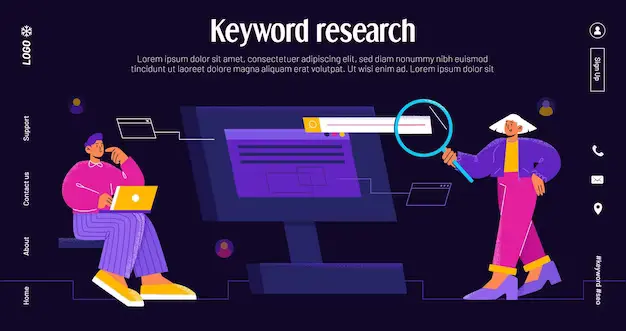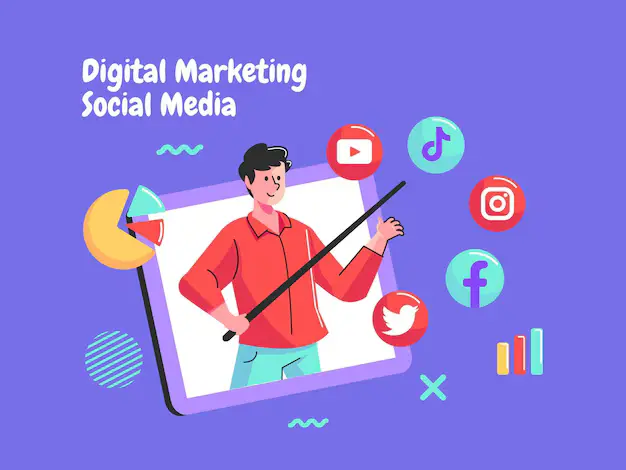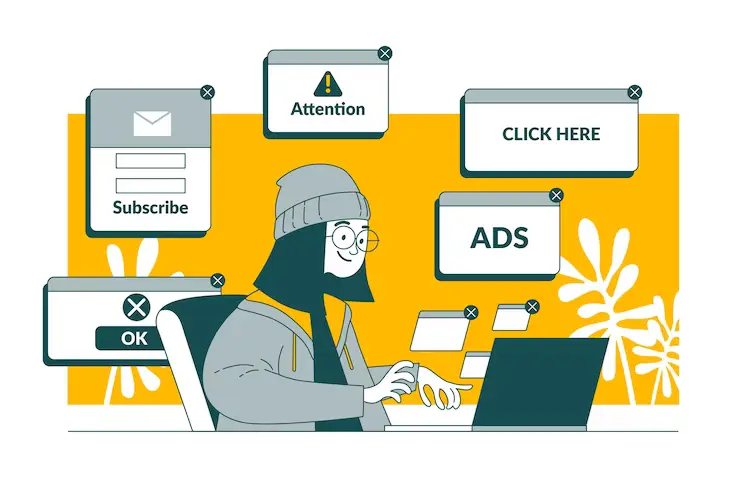Learn how to drive traffic to Shopify stores with these proven strategies. From social media ad campaigns to influencer marketing and SEO tactics, this comprehensive guide will help you boost your online visibility and attract more customers.
Driving traffic to your Shopify store is crucial for success in the competitive world of e-commerce. In this article, we learn How To Drive Traffic To Shopify Store. Whether you’re just starting or looking to boost your existing online presence, implementing effective strategies to attract visitors is key. Let’s delve into various methods to increase traffic and ultimately, sales.
Understanding Shopify
What is Shopify? Leading e-commerce platform Shopify enables both individuals and companies to design and run their online stores. With its user-friendly interface and robust features, Shopify makes it easy for entrepreneurs to sell products online.
Why choose Shopify for your online store? One of the main advantages of Shopify is its versatility. Whether you’re selling physical products, digital downloads, or services, Shopify provides the tools you need to build and grow your online business. Additionally, Shopify offers a range of customizable themes and apps to help you create a unique and engaging shopping experience for your customers.
Real Ways How To Drive Traffic To Shopify Store.
In the realm of e-commerce, driving traffic to your Shopify store is akin to fueling a rocket for takeoff. Without it, your store remains stranded in the vast expanse of the internet, unnoticed and underutilized. Many preach the mantra of paying for traffic, a seemingly logical choice. But is it the only path to success? Are there untapped reservoirs of free or low-cost methods awaiting discovery? Let’s delve into the strategies that transcend budget constraints and propel your Shopify store into orbit.
SEO Optimization

Optimizing your Shopify store for search engines Search engine optimization (SEO) plays a crucial role in driving organic traffic to your Shopify store. By optimizing your site for relevant keywords, improving site speed, and optimizing product pages, you can increase your chances of ranking higher in search engine results pages (SERPs).
When it comes to driving traffic to your Shopify store, optimizing for search engines is paramount. Here’s how to ensure your store is search-engine friendly:
Utilize Relevant Keywords: Research and incorporate keywords that are relevant to your products or niche. To find high-volume, low-competition keywords, use tools like SEMrush or Google Keyword Planner.
Optimize Product Descriptions: Craft unique and descriptive product descriptions that include your target keywords naturally. Steer clear of keyword stuffing, as it might undermine your SEO efforts.
Improve Site Speed: A fast-loading website not only enhances user experience but also improves search engine rankings. To find and address speed issues, use tools such as Google PageSpeed Insights.
Mobile Optimization: Ensure your Shopify store is mobile-friendly, as mobile responsiveness is a significant ranking factor for search engines like Google.
Create SEO-Friendly URLs: Opt for short, descriptive URLs that include relevant keywords. Avoid using numbers or random strings in your URLs.
Optimize Meta Tags: Write compelling meta titles and descriptions that include your primary keywords. These components impact click-through rates when they show up in search engine results.
Build Quality Backlinks: Earn backlinks from reputable websites within your industry. Focus on quality over quantity, as backlinks from authoritative sites carry more weight.
Regularly Update Content: Fresh, relevant content signals to search engines that your website is active and authoritative. Update your blog, product pages, and other content regularly.
By implementing these SEO strategies, you can improve your Shopify store’s visibility in search engine results and attract more organic traffic.
Utilizing Keywords Effectively

By identifying the terms and phrases your target audience is searching for, you can optimize your website content to better match their intent. Incorporate relevant keywords into your product descriptions, meta tags, and headings to improve your chances of ranking for relevant searches.
Conduct Thorough Keyword Research: Start by researching relevant keywords that align with your products or services. Look for keywords with high search volumes and low competition to maximize your chances of ranking well.
Target Long-Tail Keywords: Incorporate long-tail keywords, which are longer and more specific phrases that potential customers are likely to use when searching for products. Long-tail keywords frequently offer better conversion rates and less competition.
Use Keywords Naturally: Integrate your target keywords seamlessly into your website content, including product descriptions, blog posts, and meta tags. Avoid overstuffing keywords, as it can make your content appear spammy and harm your SEO efforts.
Optimize Headings and Subheadings: Include your primary keywords in your headings (H1, H2, H3, etc.) and subheadings to signal the relevance of your content to search engines. Your chances of ranking for certain keywords are increased as a result.
Prioritize User Intent: Focus on creating content that aligns with the intent behind specific keywords. Understanding what users are searching for and providing valuable, relevant information can help improve your rankings and drive qualified traffic to your store.
Monitor Keyword Performance: Regularly track the performance of your target keywords using tools like Google Analytics and Google Search Console. Analyze which keywords are driving the most traffic and conversions, and adjust your strategy accordingly.
Adapt to Algorithm Changes: Stay informed about updates to search engine algorithms and adjust your keyword strategy as needed. Keeping up with industry trends and best practices will help ensure your Shopify store remains competitive in search results.
Social Media Marketing

Leveraging social media to drive traffic
Social media platforms like Facebook, Instagram, and Pinterest offer powerful tools for promoting your Shopify store and engaging with your audience. Share product updates, behind-the-scenes content, and user-generated content to keep your followers engaged and encourage them to visit your store.
Social media platforms provide powerful opportunities to promote your Shopify store and attract visitors.
Choose the Right Platforms: Determine which social media sites are most popular with your target group. Focus your efforts on platforms like Facebook, Instagram, Twitter, Pinterest, and LinkedIn, depending on your niche and audience demographics.
Optimize Your Profiles: Ensure your social media profiles are complete and optimized with relevant keywords, a compelling bio, and a link to your Shopify store. Use high-quality images and consistent branding to establish a strong visual presence.
Share Compelling Content: Create engaging content that resonates with your audience and encourages interaction. Share product photos, behind-the-scenes glimpses, user-generated content, and informative posts that add value to your followers’ feeds.
Encourage Engagement: Encourage your followers to engage with your content by asking questions, running polls, hosting giveaways, and responding promptly to comments and messages. Engaging with your audience fosters a sense of community and keeps them coming back for more.
Utilize Visual Content: Visual content such as photos, videos, and infographics tends to perform best on social media. Use visually appealing imagery to showcase your products and tell your brand story in a compelling way.
Incorporate Hashtags: Use relevant hashtags to increase the visibility of your posts and attract new followers. Research popular hashtags within your niche and incorporate them strategically into your content to reach a wider audience.
Collaborate with Influencers: Partner with influencers who have a significant following and influence within your target market. Collaborate on sponsored content, product reviews, or giveaways to reach new audiences and drive traffic to your Shopify store.
Run Paid Advertising Campaigns: Consider investing in paid advertising on social media platforms to amplify your reach and drive targeted traffic to your store. Experiment with different ad formats, targeting options, and messaging to optimize your campaigns for maximum effectiveness.
By leveraging social media effectively, you can increase brand awareness, engage with your audience, and drive traffic to your Shopify store, ultimately leading to increased sales and conversions.
Engaging with your audience on social platforms
Building a strong presence on social media requires more than just posting content; it’s also important to engage with your audience and foster meaningful connections. Respond to comments and messages promptly, ask questions, and encourage user-generated content to create a sense of community around your brand.
Engaging with your audience on social media is essential for building a loyal community and increase traffic to Shopify stores. Here’s how to effectively connect with your followers:
Respond Promptly: Make it a priority to respond promptly to comments, messages, and mentions on your social media profiles. Engaging in real-time shows that you value your audience and are attentive to their needs.
Encourage Conversation: Initiate and encourage conversation by asking questions, soliciting feedback, and inviting your followers to share their thoughts and experiences. Encourage them to tag friends or family members who may be interested in your products.
Share User-Generated Content: Highlight user-generated content (UGC) from your followers to showcase real-life experiences with your products. Repost photos, testimonials, and reviews shared by satisfied customers to build trust and credibility.
Offer Exclusive Content: Reward your social media followers with exclusive content, such as sneak peeks of new products, behind-the-scenes footage, or special discounts and promotions.
Host Live Events: Organize live Q&A sessions, product demonstrations, or virtual events on platforms like Instagram Live, Facebook Live, or YouTube Live. Interact with your audience in real time and address their questions and concerns directly.
Share Personal Stories: Share personal stories and anecdotes that humanize your brand and resonate with your audience on a deeper level. Show the faces behind your business and share your journey, values, and mission.
Use Interactive Features: Take advantage of interactive features such as polls, quizzes, and interactive stories to engage your audience and encourage participation. These features provide fun and interactive ways for followers to interact with your content.
Monitor Conversations: Monitor social media conversations related to your brand or industry and join relevant discussions. Engage with hashtags and trending topics to increase your visibility and connect with new audiences.
By actively engaging with your audience on social media, you can foster meaningful relationships, increase brand loyalty, and drive traffic to your Shopify store. Remember to listen to your audience, provide valuable content, and show appreciation for their support.
Content Marketing

Creating compelling content for your Shopify store
Content marketing is a great way to attract and engage potential customers. Create blog posts, videos, and other types of content that get traffic to my Shopify store value to your audience, and showcase your expertise in your niche. Share your content on social media and optimize it for SEO to maximize its reach and effectiveness.
Content marketing is a powerful strategy for attracting and engaging potential customers while driving traffic to your Shopify store. Here are some effective ways to create compelling content:
Product Descriptions: Create detailed and fascinating product descriptions that showcase your products’ attributes, advantages, and special selling factors. Use descriptive language, persuasive copywriting, and high-quality images to showcase your offerings.
Blogging: Maintain a blog on your Shopify store where you can publish informative and engaging articles related to your products, industry, or niche. Address common pain points, answer frequently asked questions, and provide valuable insights to your audience.
Video Content: Create engaging video content, such as product demonstrations, tutorials, or customer testimonials, to showcase your products in action. Video content tends to be highly engaging and shareable, making it an effective way to attract and retain customers.
Visual Content: Incorporate visually appealing content, such as infographics, memes, and quote graphics, into your marketing strategy. Visual content is eye-catching and easily shareable, making it ideal for social media and other digital platforms.
User-Generated Content: Invite clients to write original pieces that highlight your goods and distribute them. User-generated content adds authenticity and social proof to your brand and can help attract new customers through word-of-mouth marketing.
How-To Guides and Tutorials: Create how-to guides, tutorials, and instructional videos that demonstrate how to use your products or achieve specific outcomes. Providing valuable educational content helps establish your brand as a trusted authority in your industry.
Customer Stories and Testimonials: Share customer success stories and testimonials to showcase the real-life benefits and outcomes of using your products. Authentic stories from satisfied customers can inspire trust and confidence in your brand.
Seasonal and Holiday Content: Create seasonal and holiday-themed content to capitalize on seasonal trends and events. Tailor your content to align with holidays, special occasions, or relevant cultural events to increase engagement and drive sales.
Email Newsletters: Use email marketing to deliver valuable content directly to your subscribers’ inboxes. Send out regular newsletters featuring product updates, exclusive offers, helpful tips, and relevant blog posts to keep your audience engaged and informed.
Interactive Content: Experiment with interactive content formats, such as quizzes, polls, and interactive infographics, to engage your audience and encourage participation. Interactive content is highly engaging and can help drive traffic and conversions.
Blogging for Traffic
Blogging is a powerful tool for driving traffic to your Shopify store and establishing your brand as an authority in your niche. Here’s how to leverage blogging effectively:
Blogging is an effective way to drive traffic to your Shopify store and establish yourself as an authority in your industry. Write informative, engaging blog posts that address common questions and pain points within your niche, and share them on social media and other online platforms to attract visitors to your site.
Identify Relevant Topics: Research topics that are relevant to your target audience and align with your products or industry. Consider addressing common pain points, answering frequently asked questions, or sharing valuable insights and tips.
Optimize for SEO: Incorporate relevant keywords naturally into your blog posts to improve your search engine rankings and attract organic traffic. Focus on long-tail keywords with lower competition and higher search volume for better results.
Provide Valuable Content: Create informative and valuable content that addresses the needs and interests of your audience. Offer practical advice, industry insights, and actionable tips that demonstrate your expertise and provide real value to your readers.
Use Compelling Headlines: Create headlines that grab readers’ attention and encourage them to click through to your content. Use power words, numbers, and emotional triggers to pique curiosity and draw readers in.
Incorporate Visuals: Enhance your blog posts with high-quality visuals such as images, infographics, and videos. Visual content not only makes your posts more engaging but also helps break up the text and improve readability.
Promote Across Channels: Share your blog posts across your social media channels, email newsletters, and other marketing channels to maximize their reach and exposure. Encourage your followers to read and share your content with their networks.
Guest Blogging: Explore opportunities for guest blogging on other relevant websites and blogs within your industry. Guest blogging allows you to reach new audiences, establish credibility, and drive traffic back to your Shopify store through backlinks.
Engage with Your Audience: Encourage comments, feedback, and discussion on your blog posts by responding to reader comments and questions. Interacting with viewers produces a feeling of community and motivates them to return to your blog.
Include Call-to-Actions (CTAs): Include clear and compelling call-to-actions (CTAs) within your blog posts to prompt readers to take the next step, such as signing up for your email list, downloading a free resource, or visiting your Shopify store.
Analyze and Optimize: Monitor the performance of your blog posts using analytics tools and adjust your blogging strategy based on insights. Track metrics such as traffic, engagement, and conversions to identify what’s working and what can be improved.
Email Marketing

Building an email list Email marketing remains one of the most effective ways to nurture leads and drive sales. Offer incentives such as discounts or freebies in exchange for visitors’ email addresses, and use email marketing software to segment your list and send targeted campaigns to different segments of your audience.
Offer Incentives: Entice visitors to subscribe to your email list by offering valuable incentives such as discounts, exclusive offers, freebies, or access to premium content. Make the value proposition clear and compelling to encourage sign-ups.
Create Opt-in Forms: Place opt-in forms prominently on your website, including on your homepage, product pages, and blog posts. Keep the form simple and easy to fill out, requiring only essential information such as name and email address.
Provide Social Proof: Highlight social proof, such as testimonials or subscriber counts, to build trust and credibility with potential subscribers. People are more likely to sign up for your email list if they see that others have benefited from it.
Host Contests or Giveaways: Run contests or giveaways that require participants to sign up for your email list to enter. Promote the contest across your website and social media channels to attract new subscribers and generate excitement.
Create Lead Magnets: Develop lead magnets such as ebooks, guides, checklists, or templates that offer valuable insights or resources related to your niche. Require visitors to provide their email address to access the lead magnet, effectively growing your email list.
Optimize Pop-up Forms: Use pop-up forms strategically to capture the attention of website visitors and encourage them to subscribe to your email list. Customize the timing, design, and messaging of pop-ups to maximize conversions without disrupting the user experience.
Run Webinars or Workshops: Host webinars or workshops on topics of interest to your target audience and require attendees to register with their email addresses. Provide valuable insights and actionable tips during the event to incentivize sign-ups.
Cross-Promote with Partners: Partner with similar companies or influential people in your sector to mutually promote each other’s email lists. Reach out to potential partners and offer to promote their list in exchange for them promoting yours.
Segment Your List: Segment your email list based on demographics, interests, purchase history, or engagement levels to deliver more personalized and relevant content to subscribers. Tailor your email campaigns to meet the specific needs and preferences of each segment.
Engage Consistently: Regularly communicate with your email subscribers by sending them valuable content, product updates, promotions, and special offers. Maintain a consistent email schedule to keep your brand top-of-mind and encourage repeat visits to your Shopify store.
By implementing these strategies, you can effectively build an email list of engaged subscribers who are interested in your products or services, ultimately increase traffic to Shopify store.
Crafting Effective Email Campaigns
Crafting effective email campaigns is essential for engaging your subscribers, nurturing leads, and driving traffic to your Shopify store. Here’s how to create email campaigns that resonate with your audience:
Define Your Goals: Clearly define the objectives of your email campaign, whether it’s to promote a new product, announce a sale, share valuable content, or re-engage inactive subscribers. Align your messaging and content with your goals to drive desired actions.
Personalize Your Emails: Personalization is key to making your subscribers feel valued and appreciated. Use merge tags to include recipients’ names in the subject line and greeting, segment your list based on demographics or behavior, and tailor your content to meet their interests and preferences.
Write Compelling Subject Lines: Craft attention-grabbing subject lines that entice recipients to open your emails. Keep them concise, descriptive, and relevant to the content of your email. Experiment with emojis, numbers, and power words to increase open rates.
Provide Value: Deliver valuable content that educates, entertains, or solves a problem for your subscribers. Share helpful tips, industry insights, product recommendations, or exclusive offers that resonate with their needs and interests.
Use Eye-Catching Visuals: Incorporate eye-catching visuals such as images, GIFs, or videos to make your emails visually appealing and engaging. Use images that showcase your products, reinforce your brand identity, and complement your message.
Include Clear Call-to-Actions (CTAs): Include clear and compelling call-to-actions (CTAs) that prompt recipients to take the desired action, whether it’s making a purchase, visiting your website, downloading a resource, or following you on social media. Use actionable language and a sense of urgency to encourage clicks.
Optimize for Mobile: Optimize your email campaigns for mobile devices to ensure they render correctly and are easy to read on smartphones and tablets. Use responsive design, single-column layouts, and large, tappable buttons to enhance the mobile user experience.
Test and Iterate: Regularly test different elements of your email campaigns, such as subject lines, content, visuals, and CTAs, to identify what resonates best with your audience. Use A/B testing to compare variations and optimize your campaigns based on performance data.
Monitor and Analyze Results: Track key metrics such as open rates, click-through rates, conversion rates, and unsubscribe rates to measure the effectiveness of your email campaigns. Use analytics tools to gain insights into subscriber behavior and preferences, and adjust your strategy accordingly.
Maintain Consistency: Maintain a consistent schedule and frequency for sending emails to your subscribers to keep your brand top-of-mind and nurture relationships over time. Be reliable and trustworthy in your communications to build trust and credibility with your audience.
By following these best practices, you can create email campaigns that engage your subscribers, drive traffic to your Shopify store, and ultimately, contribute to your business’s success.
Influencer Collaborations
Influencer marketing can be a powerful way to reach new audiences and drive traffic to your Shopify store. Identify influencers in your niche with a strong following and engaged audience, and collaborate with them to create sponsored content that showcases your products to their followers.
Partnering with Influencers to Promote Your Store
Influencer collaborations can be a powerful way to expand your reach, increase brand awareness, and drive traffic to your Shopify store. Here’s how to effectively partner with influencers:
Identify Relevant Influencers: Research and identify influencers in your niche or industry whose audience aligns with your target demographic. Look for influencers who have a sizable following, high engagement rates, and a genuine connection with their audience.
Establish Clear Objectives: Define your goals and objectives for the influencer collaboration, whether it’s to increase brand visibility, generate sales, drive website traffic, or launch a new product. Communicate your expectations and desired outcomes clearly with the influencer.
Build Authentic Relationships: Focus on building authentic relationships with influencers based on mutual respect and trust. Engage with their content, comment on their posts, and demonstrate genuine interest in their work before reaching out with collaboration opportunities.
Craft a Compelling Pitch: Craft a personalized and compelling pitch that outlines the benefits of collaborating with your brand. Highlight what sets your brand apart, why their audience would be interested in your products, and what you can offer in return for their promotion.
Offer Value: Provide influencers with valuable incentives and perks to incentivize collaboration, such as free products, exclusive discounts, affiliate commissions, or monetary compensation. Ensure that the value proposition is fair and mutually beneficial.
Define Expectations: Clearly define the scope of the collaboration, including deliverables, timelines, and key performance indicators (KPIs). Discuss the content format, posting schedule, and any specific messaging or branding guidelines to maintain consistency with your brand.
Leverage Authentic Content: Encourage influencers to create authentic and engaging content that resonates with their audience while showcasing your products or brand in a natural and compelling way. Trust the influencer’s creativity and expertise to create content that authentically represents your brand.
Amplify Reach: Amplify the reach of influencer-generated content by reposting, sharing, and promoting it across your own social media channels, website, and email newsletters. Encourage your followers to engage with the content and visit your Shopify store.
Measure Performance: Track and measure the performance of the influencer collaboration using relevant metrics such as reach, engagement, website traffic, and sales. Evaluate the ROI of the collaboration and identify opportunities for improvement in future partnerships.
Cultivate Long-Term Partnerships: Focus on cultivating long-term relationships with influencers who align with your brand values and consistently deliver results. Nurture ongoing collaborations and partnerships to maximize their impact and foster brand loyalty among their audience.
By partnering with influencers strategically and authentically, you can leverage their influence to drive traffic, increase brand awareness, and ultimately, grow your Shopify store’s success.
Paid Advertising

Paid advertising can help you reach your target audience quickly and effectively. Experiment with different types of ads, such as Google Ads, Facebook ads, and Instagram ads, to see which platforms and ad formats resonate best with your audience. Monitor your campaigns closely and adjust your targeting and messaging as needed to maximize your return on investment.
Running Targeted Ads for Your Shopify Store
Paid advertising is a highly effective way to drive targeted traffic to your Shopify store and increase sales. Here’s how to run targeted ads effectively:
Set Clear Goals: Define your advertising objectives, whether it’s to increase website traffic, generate leads, boost sales, or promote specific products or promotions. Establish clear, measurable goals to guide your advertising strategy.
Identify Your Target Audience: Identify your target audience based on demographics, interests, behavior, and purchasing habits. Use audience targeting tools provided by advertising platforms to reach the right people with your ads and maximize ROI.
Choose the Right Advertising Platforms: Select the most suitable advertising platforms based on your target audience and advertising goals. Popular options for Shopify store owners include Google Ads, Facebook Ads, Instagram Ads, Pinterest Ads, and LinkedIn Ads.
Create Compelling Ad Creative: Develop visually appealing and compelling ad creative that grabs attention and entices users to click. Use high-quality images or videos, clear messaging, and a strong call-to-action (CTA) to encourage engagement and drive conversions.
Write Persuasive Ad Copy: Craft persuasive ad copy that communicates the unique value proposition of your products or services and resonates with your target audience. Highlight benefits, address pain points, and use persuasive language to compel action.
Optimize Landing Pages: Ensure that your ad campaigns are driving traffic to optimized landing pages that provide a seamless and relevant user experience. Customize landing pages to match the messaging and design of your ads and include clear CTAs to facilitate conversions.
Set Budgets and Bidding Strategies: Set realistic advertising budgets and bidding strategies based on your financial resources and campaign objectives. Monitor your ad spend closely and adjust your budgets and bids to maximize the return on investment (ROI) of your campaigns.
Track and Measure Results: Monitor the performance of your ad campaigns using analytics tools provided by the advertising platforms. Track key metrics such as impressions, clicks, conversions, and return on ad spend (ROAS) to evaluate the effectiveness of your campaigns and make data-driven decisions.
A/B Test Ad Variations: Conduct A/B tests to compare different ad variations and identify which elements are driving the best results. Test variables such as ad copy, images, headlines, CTAs, and targeting options to optimize your campaigns for maximum performance.
Iterate and Optimize: Continuously iterate and optimize your ad campaigns based on performance data and insights. Experiment with new targeting options, ad formats, and messaging strategies to improve results and achieve your advertising goals.
By implementing these strategies, you can effectively run targeted ads for your Shopify store and increase traffic to Shopify store, reach your ideal customers, and drive meaningful results that contribute to your business’s success.
Analytics and Optimization
Analytics tools like Google Analytics provide valuable insights into how visitors are finding and interacting with your Shopify store. Monitor key metrics such as traffic sources, bounce rate, and conversion rate to identify areas for improvement and optimize your site for better performance.
Tracking and analyzing website traffic
Tracking and analyzing website traffic is essential for optimizing your Shopify store’s performance and identifying opportunities for improvement. Here’s how to effectively track and analyze website traffic:
Set Up Google Analytics: Install Google Analytics on your Shopify store to track key metrics such as website traffic, visitor behavior, and conversion rates. Configure goals and events to measure specific actions taken by users, such as making a purchase or signing up for your email list.
Monitor Key Metrics: Regularly monitor key metrics such as sessions, page views, bounce rate, average session duration, and conversion rate. Analyze trends over time and identify areas of improvement or potential issues that need attention.
Segment Your Data: Segment your website traffic data to gain insights into different user groups, such as new vs. returning visitors, traffic sources, demographics, and device types. Understanding your audience segments can help tailor your marketing strategies to better meet their needs.
Analyze Traffic Sources: Identify the sources of your website traffic, including organic search, direct traffic, referral traffic, and paid advertising. Evaluate the effectiveness of each traffic source in driving visitors to your Shopify store and allocate resources accordingly.
Track Conversion Funnels: Set up and track conversion funnels to analyze the steps users take to complete a desired action, such as making a purchase. Identify any drop-off points or barriers to conversion and optimize your funnel to improve conversion rates.
Conduct A/B Testing: Experiment with different website elements, such as headlines, call-to-action buttons, product descriptions, and page layouts, through A/B testing. Compare variations to determine which elements perform best and optimize your website for maximum effectiveness.
Monitor Site Performance: Regularly monitor your Shopify store’s performance, including page load times, server response times, and overall site speed. Slow-loading pages can lead to higher bounce rates and lower conversion rates, so optimize your site for speed to improve user experience.
Analyze User Behavior: Analyze user behavior on your website, such as navigation patterns, content consumption, and interaction with product pages. Use heatmaps, session recordings, and user flow reports to gain insights into how users engage with your site and make data-driven decisions to improve usability.
Identify Top Performing Content: Identify your top-performing content, such as blog posts, product pages, and landing pages, based on traffic, engagement, and conversion metrics. Replicate successful content strategies and optimize underperforming content to drive more traffic and conversions.
Continuously Optimize: Continuously optimize your Shopify store based on data-driven insights and performance metrics. Regularly review your analytics data, implement changes, and test new strategies to improve website traffic, user experience, and conversion rates over time.
By tracking and analyzing website traffic effectively, you can gain valuable insights into your Shopify store’s performance, identify areas for improvement, and optimize your strategies to drive more traffic and conversions.
Conclusion
Driving traffic to your Shopify store requires a multifaceted approach that combines SEO, social media marketing, content marketing, email marketing, influencer collaborations, paid advertising, and analytics. By implementing these strategies and continually refining your tactics based on data and feedback, you can attract more visitors to your site and ultimately, increase sales.